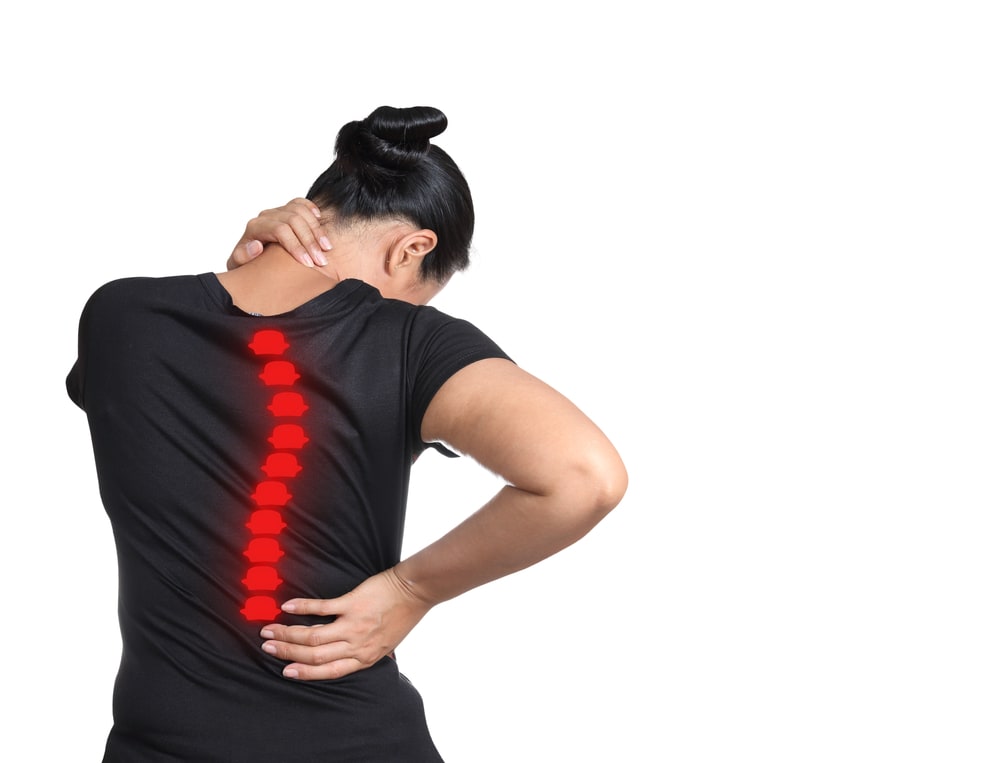
Scoliosis: What Causes it, and Who Does it Affect?
Categories: Back Pain / Child Orthopedics / General Orthopedics
Back pain ranks as one of the top issues that Americans seek treatment for each year. And, based on lifestyle and other environmental and personal factors, the causes of this back pain can vary. As a Long Island orthopedics office, we’ve witnessed this firsthand. Scoliosis is a particularly common spinal deformity, which can either cause or lead to back pain. Left untreated, scoliosis can also lead to worse conditions. Read on to learn about the causes of scoliosis, symptoms and potential treatments.
What is Scoliosis?
Under normal conditions, the spine should run straight from the neck down toward the buttocks. People with scoliosis have a curve in their spine, causing it to be pushed to either the right or the left. This curve can be slight or severe, and may worsen over time.

Who Is Most Likely to Get Scoliosis?
People often associate scoliosis with children, and for good reason. Idiopathic scoliosis, which can develop in children who are at least 10, is the most common case. During regular screenings, pediatric specialists attempt to detect a C or S shaped spine.
Idiopathic scoliosis results from the rapid growth and development of the body. As the body is developing and bones are growing, the spine can grow deformed. In fact, scoliosis is most likely during the height of puberty. Existing scoliosis is also more likely to grow in severity during puberty.
To treat scoliosis and other children’s orthopedics issues, consulting with a Long Island orthopedics office is essential.
Factors That Contribute to Scoliosis Development
Sex
Females are not more likely to develop scoliosis, but are more likely to experience progression.
Genetics
Studies have shown that family history can increase the chances of scoliosis. About 30% of scoliosis patients have a history of these issues.
Existing Conditions
Severe conditions such as cerebral palsy can leave patients predisposed to spinal deformities, like scoliosis.
Lifestyle, on the other hand, is not the important factor that many specialists theorized it might be. Many believed that carrying a heavy backpack would cause the spine to shift in one direction. Others thought that there was a sure correlation between scoliosis and sports. While sports injuries can lead to scoliosis, playing sports cannot directly lead to this condition. A Long Island orthopedics office can aid in treating these injuries to prevent them from worsening.

How Can I Tell if My Children Have Scoliosis?
In most cases, it’s difficult for parents to detect subtle signs of scoliosis in their children. A minor curve in the spine may not be easily visible, and it may take a trained eye to discern it. Beyond this curve, though, there are other signs that your child may have scoliosis. A Long Island orthopedics office will be able to help you identify and understand these factors.
Symptoms of Scoliosis
- Abnormal Shoulders: Scoliosis may cause children to develop uneven shoulders, with protruding shoulder blades.
- Uneven Waist: Based on the curvature of the spine, the waist may have a different shape on each side.
- Back Pain: Scoliosis can cause children to experience back pain. By consulting with a Long Island orthopedics office, you can help eliminate this pain.
- Posture: Stooping over or slouching to one side may be indicative of scoliosis.
- Tingling: Scoliosis may lead some children to experience a slight tingling, or numb sensation.
- Ribs: On one side of the body, the ribs may have a more pronounced presence.
- Neck Pain: In rare cases, scoliosis may lead to pain in the neck as well.
Depending on the patient, scoliosis may also decrease the range of motion. A Long Island orthopedics office can help you to recover this range of motion.
How is Adolescent Scoliosis Treated?
Scoliosis treatments are based around the severity of the condition.
Minimal Spinal Curve
For less severe cases, there may not be any need for treatment. In order to ensure that the scoliosis does not become worse, most physicians monitor the size of the curve. This treatment strategy generally applies to patients with curves up to 20 degrees.
Moderate Spinal Curve
Moderately severe cases of scoliosis require greater attention and care. Back braces are a common way to prevent scoliosis from progressing, especially during puberty. This strategy is common for curves between 25 and 40 degrees. In order to prevent this pain from growing, many Long Island orthopedics specialists recommend specific back pain exercises.
Severe Spinal Curve
For curves that are over 45 degrees, many specialists recommend a surgical approach. Often suitable for younger patients, minimally invasive scoliosis surgery seeks to fuse the disjointed vertebrae together.
Adult Degenerative Scoliosis
Scoliosis is most commonly found in children, but scoliosis in adults is not unheard of. This form of scoliosis often develops after adults reach the age of 50, and occurs as the spine wears down. For some patients, adult degenerative scoliosis may come about as a result of conditions like osteoarthritis.
To treat this condition and limit pain symptoms, most Long Island orthopedics offices guide patients through particular exercises. Bracing is also a common tactic.
To avoid worsening this condition, be sure to create a spine-friendly workplace.
Long Island Orthopedics
At Central Orthopedics, our staff is experienced in providing the highest degree of care. We can help you or your child to overcome the pain caused by scoliosis, and mitigate potential side effects. Contact us to schedule an appointment and begin improving your quality of life!
